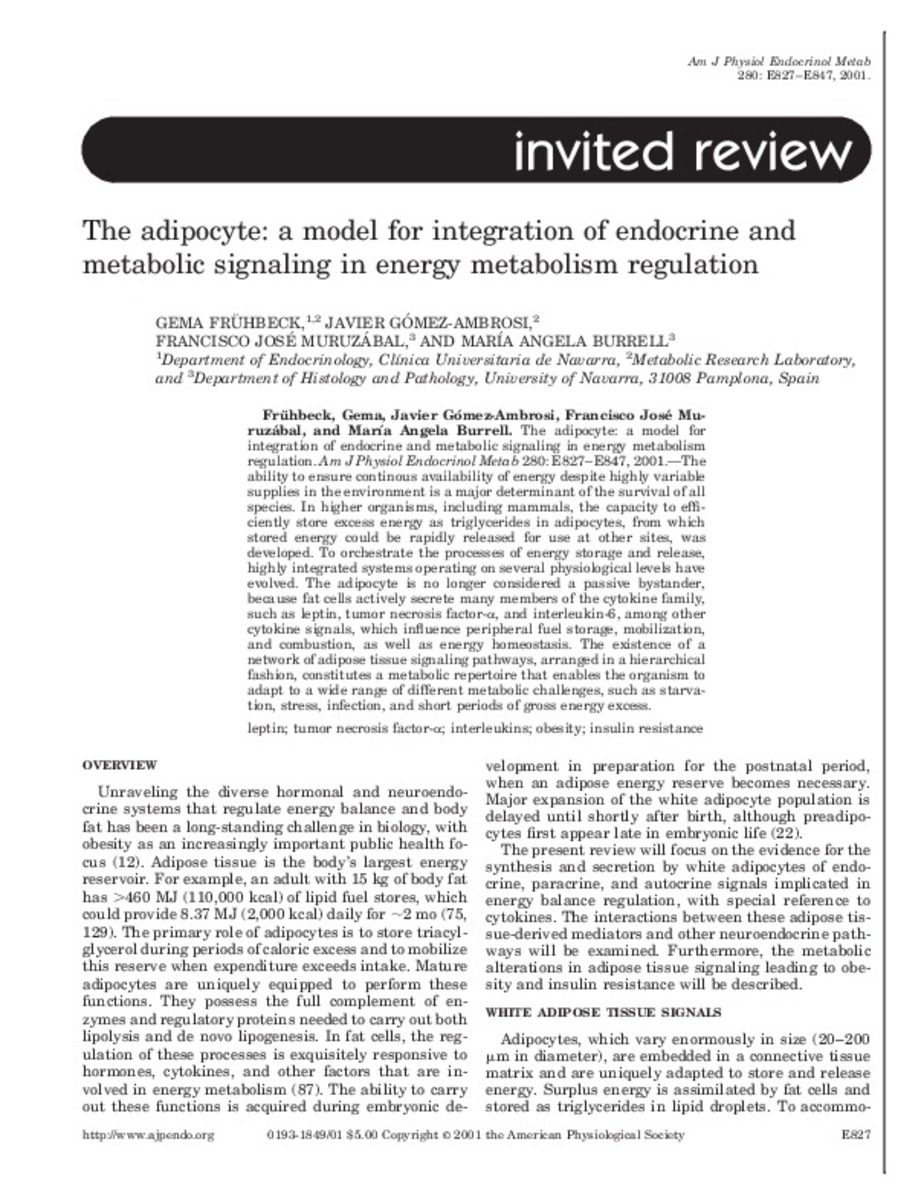The adipocyte: a model for integration of endocrine and metabolic signaling in energy metabolism regulation
Palabras clave :
Endocrine Glands/physiology
Energy Metabolism/physiology
Insulin Resistance/physiology
Fecha de publicación :
2001
Editorial :
American Physiological Society
Cita:
Fruhbeck G, Gomez-Ambrosi J, Muruzabal FJ, Burrell MA. The adipocyte: a model for integration of endocrine and metabolic signaling in energy metabolism regulation. Am J Physiol Endocrinol Metab 2001 Jun;280(6):E827-47.
Aparece en las colecciones:
Estadísticas e impacto
0 citas en

0 citas en

Los ítems de Dadun están protegidos por copyright, con todos los derechos reservados, a menos que se indique lo contrario.







